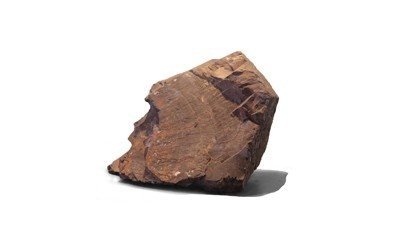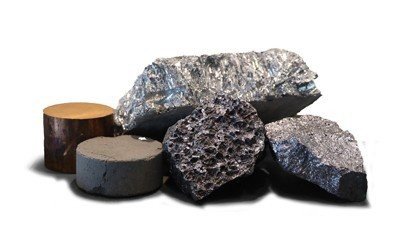GENEL ÖZELLİKLERİ

Endüstrinin pek çok kolunda milyonlarca farklı ürünün yapımında kullanılmakta olup dünya ekonomisi içinde çok önemli bir yeri vardır. Hafiflik ve yüksek dayanım özellikleri gerektiren otomotiv, havacılık ve savunma sanayisinde vazgeçilmezdir. Estetiğin ön planda olduğu inşaat ve mobilya sanayisinde de geniş kullanım alanı bulur.
TARİHÇESİ
Friedrich Wöhler'in alüminyumu, 1827'de susuz alüminyum klorürü potasyum ile karıştırarak ayrıştıran ilk kişi olduğu bilinirse de o tarihten iki sene kadar önce Danimarkalı bir fizikçi ve kimyacı olan Hans Christian Øersted tarafından saf olmayan bir formda üretilmiştir. Dolayısıyla kimya literatüründe Øersted'in adı alüminyumu bulan kişi olarak geçer. Fransız Henri Saint-Claire Deville, 1846'da Wöhler'in metodunu daha pahalı olan potasyum yerine sodyum kullanarak geliştirmiştir.
Amerikalı Charles Martin Hall 1886'da, alüminyumun elektrolitik bir işlemle eldesine ilişkin bir patent başvurusunda bulunmuş, aynı yıl Hall'un bu buluşundan tamamen habersiz olmak üzere Fransız Paul Héroult da aynı tekniği Avrupa'da geliştirmiştir. Bu nedenle iki bilim adamının adı verilen Hall-Heroult işlemi, günümüzde alüminyumun cevherinden eldesinde bütün dünyada kullanılan temel yöntemdir.
Amerikalı Charles Martin Hall 1886'da, alüminyumun elektrolitik bir işlemle eldesine ilişkin bir patent başvurusunda bulunmuş, aynı yıl Hall'un bu buluşundan tamamen habersiz olmak üzere Fransız Paul Héroult da aynı tekniği Avrupa'da geliştirmiştir. Bu nedenle iki bilim adamının adı verilen Hall-Heroult işlemi, günümüzde alüminyumun cevherinden eldesinde bütün dünyada kullanılan temel yöntemdir.
TEMEL ÖZELLİKLERİ
| Atomic Number: | 13 |
| Element Series: | Metals |
| Group, Period, Block: | 13, 3, p |
| Atomic Weight: | 26.9815386(8) g/mol |
| Electron Arrangement: | Ne 3s2 3p1 |
| Electrons per Energy Level: | 2, 8, 3 |
ATOM PROPERTIES

| Crystal Structure: | Yüzey merkezli kübik |
| Oxidation Level: | (3+) (amfoter oksit) |
| Electronegativity: | 1,61 Pauling ölçeği |
| Ionization Energy: | 577,5 kJ/mol |
| Atomic radius: | 143 pm |
| Atomic Radius (calc.): | 118 pm |
| Covalent radius: | 118 pm |
DİĞER ÖZELLİKLERİ

| Elektrik Direnci: | 26,50 nΩ•m (20°C'de) |
| Isıl İletkenlik: | 237 W/(m•K) |
| Isıl Genleşme: | 23,1 µm/(m•K) (25°C'de) |
| Ses Hızı: | 5000 m/s (20 °C'de) |
| Mohs Sertliği: | 2,75 |
| Vickers Sertliği: | 167 MPa |
| Brinell Sertliği: | 245 MPa |
ALLOYS

Aluminum alloys are divided into two groups as forging and casting alloys. Plastic deformation capability of forging alloys is very good and can easily be shaped. Heat treatment can be applied to a large portion of the casting and forging aluminum alloys.
According to the American Aluminum Association, aluminum forging alloys are classified with four letters. This classification is as follows:
1XXX: Pure aluminum. Often used in the electrical and chemical industries.
2XXX Al-Cu alloys. Main alloying element is copper. Other alloying elements may also be present, including particularly magnesium; it is used widely in aerospace industry where high strength is required.
3XXX Al-Mn alloys. Main alloying element is manganese. It is used in pipes, tanks and architectural applications.
4XXX Al-Si alloys: Main alloying element is silicon. These alloys have low thermal expansion coefficient and high wear resistance and corrosion resistance. They are used in the production of auto parts, welded structures and plate production.
5xxx Al-Mg alloys: Main alloying element is magnesium. As magnesium ratio increases hardness and strength increase too but the ductility decreases. Because of their high resistance to marine corrosion, they are s used in the manufacture of the structures operated in this environment.
6XXX Al-Mg-Si alloys: Main alloying elements are magnesium and silicon. Shaping property of these alloys is high and often used in the manufacture of the parts produced by extrusion.
7XXX Al-Zn alloys: the main alloying element is copper and magnesium, chromium and zirconium are additional alloying elements. 7XXX series is the one with the highest strength among aluminum alloys. It is used in aircraft parts production and other applications where high strength is required.
8XXX Al-Li alloys: the main alloying element is lithium and tin can also be added. In particular, this material is used in aircraft and space structures and it has good fatigue resistance and good toughness properties. However, compared to other Al alloys it has high production costs.
